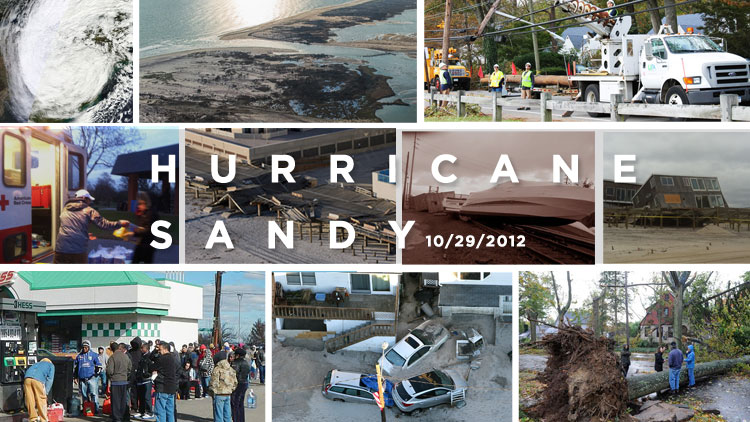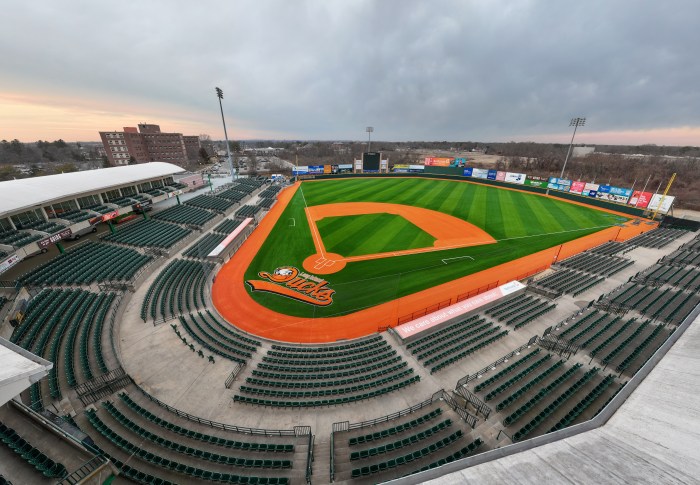Saturday marks four years since Superstorm Sandy unleashed catastrophe across Long Island, but the region remains vulnerable to future hurricanes because public and private projects to repair the damage remain partly incomplete.
Reconstruction is about half completed at the Bay Park Sewage Treatment Plant, which was knocked offline for a month after the storm, spewing sewage into waterways and homes. Waterfront neighborhoods that were flooded in the storm surge are still works in progress. And a project to rebuild the beach and flattened dunes on Fire Island won’t be completed until next year—assuming it isn’t further delayed.
“There is no doubt that we have come a long way, but there is still much more work to prepare our communities for future storms,” New York State Sen. Todd Kaminsky (D-Long Beach) said.
Sandy rolled ashore Oct. 29, 2012, killing 153 people, including 53 in New York—13 of them on LI. Millions were displaced across the East Coast, with about 40,000 in The Empire State. Causing an estimated $65 billion in damage, the storm was the second costliest on record—second only to Katrina.
In Nassau County, the most expensive public works project after the storm has been the rehabilitation of the Bay Park plant. Of the $830 million that the Federal Emergency Management Agency allocated to the project, $400 million has been spent. Eighteen projects at the plant are active, four are about to start and six are mostly completed—but 14 more are needed to fully protect the facility, county officials said.
“We continue to rebuild our infrastructure stronger than ever before,” said Nassau County Executive Ed Mangano, who recently pleaded not guilty to federal corruption charges.
Most recently, workers finished building a seawall around the plant to protect it from future flooding. On the North Shore, the county expects to begin the third phase of rebuilding West Shore Road in Bayville, where a seawall collapsed in the storm.
On the other side of the county line, the costliest ongoing storm rehabilitation project involves rebuilding the beach and dunes on about half the length of Fire Island, the 32-mile barrier island—the largest of four protecting mainland Long Island from the ocean. The $207-million Fire Island Inlet to Moriches Inlet (FIMI) project was completed on the east and west ends of the island, but has yet to be completed in the middle because of the complicated negotiations to either relocate homes in the way of the new dune, offer buyouts to those that can’t be moved or condemn those that refuse offers. As a result, the third phase of the project was broken up into smaller jobs.
“One contract will include home demolitions; a second for home relocations; a third for relocation of a water well; a fourth for removing various decks, pools and walls; and a fifth for beach fill, dunes and crossovers,” said James D’Ambrosio, spokesman for the New York District of the U.S. Army Corps of Engineers, the agency overseeing the work. “All structural work must take place prior to placing sand and building dunes.”
Those remaining projects all require the stars to align to be contracted and completed by next spring, as projected. Prior delays have included harsh winter weather, dredge companies that perform the work being unavailable in time and work needing to be completed before late spring, when endangered Piping plover nesting season returns to the beach. And sand can’t be pumped on the beach at the height of the summer tourism season—an idea that was scrapped this year.
Farther east on the island, one major Sandy repair job may be crossed off the to-do list before it even gets started. The Fire Island National Seashore announced this month that it prefers not to close the breach near Old Inlet, a remote section of the island in the eight-mile Otis Pike High Dune Wilderness preserve. Officials and residents were initially concerned that it would cause flooding in bay side communities, but those fears were later determined to be unfounded and experts instead found that the breach helped improve water quality in the bay.
Overall, those areas on LI that are being rebuilt may see work drag on for years to come, a Press analysis of hurricane recovery efforts nationwide found.




























